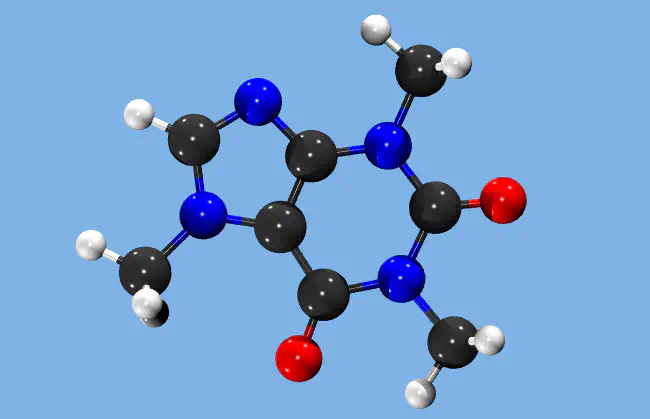Beginners Introduction to Computational Chemistry
 quantum computational chemistry, a caffiene molecule
quantum computational chemistry, a caffiene molecule
Abstract
This workshop will be highly interactive and hands-on and aimed at those who have not yet tried computational chemistry on molecules. You don’t need to be a chemist! High-school chemistry or biology is enough.
Also suitable for those beginners who are looking for a bit more help. Do you already have the basics and want to talk through a project or problems, come along for some expert advice!
We will be using the Gaussian/GaussView suite of programs for which the University has a site license. We will also talk about where quantum chemical computational chemistry can be useful, and where/what other computational chemistry methods are possible. Do you want to:
-
create a reliable 3D visualisation of your molecule
-
compute and visualise molecular vibrations (IR, Raman)
-
compute an NMR spectrum
-
understand a bit more about the bonding in your molecule
-
just see what computational chemistry can do
-
talk over which methods might be best for your project
Beginners Introduction to Computational Chemistry
Dec 6 9am-2.30pm in KK218
Te Herenga Waka—Victoria University of Wellington’s Hub for Simulation, Numerical methods, Analytics and Programming (SNAP) invites you to an interactive workshop on computational chemistry.
This workshop is suitable for those who have never used computational chemistry before as well as those who are beginners and would like to advance their skills. Come along to find out how computational chemistry could be used within your research project.
The workshop is open to all academic and research staff, and postgraduate students. No university level chemistry is required, but some high school exposure to chemical structures is needed. Cross-over with health, biology, geology, and water chemistry is relevant.
Gaussian will be accessed via a graphical interface, you will learn how to build a molecule, optimise its structure and generate physically relevant information such as the IR and NMR data. You will also see the results of quantum mechanics in action, viewing molecular orbitals and partial charges.
Register at the link: https://vuw.libcal.com/event/5511158
Not required, but it would be useful if you can e-mail patricia.hunt@vuw.ac.nz giving your name area of research and an example molecule of the type you are interested in; a chemdraw structure, atomic xyz coordinates, or cif crystal structure.
When: Tuesday 6 Dec 2022
Where: KK218 Cyber Common Room
Questions: patricia.hunt@vuw.ac.nz
Proposed timeline:
- 9.00 introduction
- 9.30 hands on using gaussian
- 10.30-11 morning coffee, discussion
- 11.00 hands on using gaussian, drop in for advice
- 12.30-1:15 lunch
- 1.15 discussion of more advanced techniques, drop in for advice
- 2.30 finish
 Quantum computational chemistry, animated vibration of the ammonia molecule
Quantum computational chemistry, animated vibration of the ammonia molecule